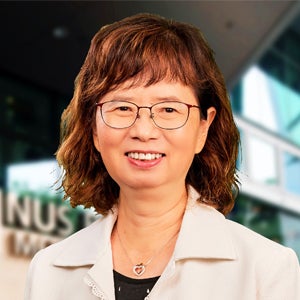The symbiotic relationship between effective teaching and students’ learning is at the core of university education. The primary aim of teaching is to enable learning—a learning that encompasses changes in students’ knowledge, beliefs, behaviours, attitudes, and skills. Recognising that effective teaching goes beyond imparting knowledge, and that students are active agents in their learning, is therefore crucial. Any conversation about effective teaching needs to begin with a deliberation on how students learn. Ambrose et al. (2010) outline seven conditions that give rise to effective learning and provide educators an understanding of why and how certain teaching approaches and strategies are more effective in facilitating student learning. These principles include:
- Students’ prior knowledge can help or hinder learning.
- Students’ organisation of knowledge influences how they learn and apply what they know.
- Students’ motivation determines, directs, and sustains what they do to learn.
- To develop mastery, students must acquire component skills, practise integrating them, and know when to apply them.
- Goal-directed practice coupled with targeted feedback are critical to learning.
- Students’ level of development is influenced by the intellectual, social, emotional, and physical aspects of the course climate.
- Students must develop metacognitive skills to monitor and control their learning so as to become self-directed learners.
Why technology?
Having grown up in a digital age, today’s students are constantly distracted by technology, which results in short attention spans. It is therefore important for teachers to maintain a high level of student engagement, since the more engaged students are, the more they will learn. Rather than viewing technology negatively, why not take advantage of it to engage students more?
Approach
Observe, Diagnose, Resolve
The fundamental factor of an effective teacher is to be reflective, “knowing what appears to ‘work’, that is, what appears to help the students understand or enjoy what we try to teach them.”(Ashwin 229). In order to do so, one has to observe, diagnose and resolve. We can learn how Prof Sim addressed the learning issues that he observed in his class, which prompted him to switch his past methods to an innovative one to resolve the said learning issue. Prof Sim observed the results of his teaching and sought constructive feedback from his students. This allowed him to diagnose the learning issue which is student’s inherent fear of asking “stupid” questions during consultation and hence choose not to seek clarification. Moreover, he also understood how this learning issue might have impacted on his student’s learning and has to do something about it. This led him to the resolution of setting up a Helpline on Telegram to allow students to reach out privately instead of in a formal setting. To his surprise, students responded positively to his methods, demonstrating high engagement with the Helpline and this is all accredited to listening to his students, paying attention to the underlying root causes and resolving it with a contextualised and targeted solution. https://blog.nus.edu.sg/teachingconnections/2021/02/03/my-experiences-in-using-the-telegram-messaging-app-as-a-teaching-tool/
Maximise student learning
Another point to consider when utilising technology to enhance learning is to question whether said technology can maximise student learning? Let’s explore how Prof Natarajan from SoC managed to do so utilising annotation technology while keeping student learning maximisation in mind. Prof Natarajan understood the Cognitive Load Theory, which highlights when students are presented with a lot of new information, their brain cannot process all these new information at once due to limited capacity of our working memory. Hence something has to be done to maximise the amount of new information a student can move from their working memory to long-term memory for effective learning. The approach that he took was to use handwritten annotations to walk students through the entire process step-by-step, connecting the dots, piecing everything together. Turns out that these simple annotations was beneficial for students in helping them better understand the lecture content and simplify the learning process. https://blog.nus.edu.sg/teachingconnections/2022/07/26/teaching-with-annotations/
Conclusion
There are many ways to help teachers and students when using technology for their purposes. Using technology saves time, makes feedback readily available, and gives students the opportunity to be creative and be confident to make personal choices.



































































